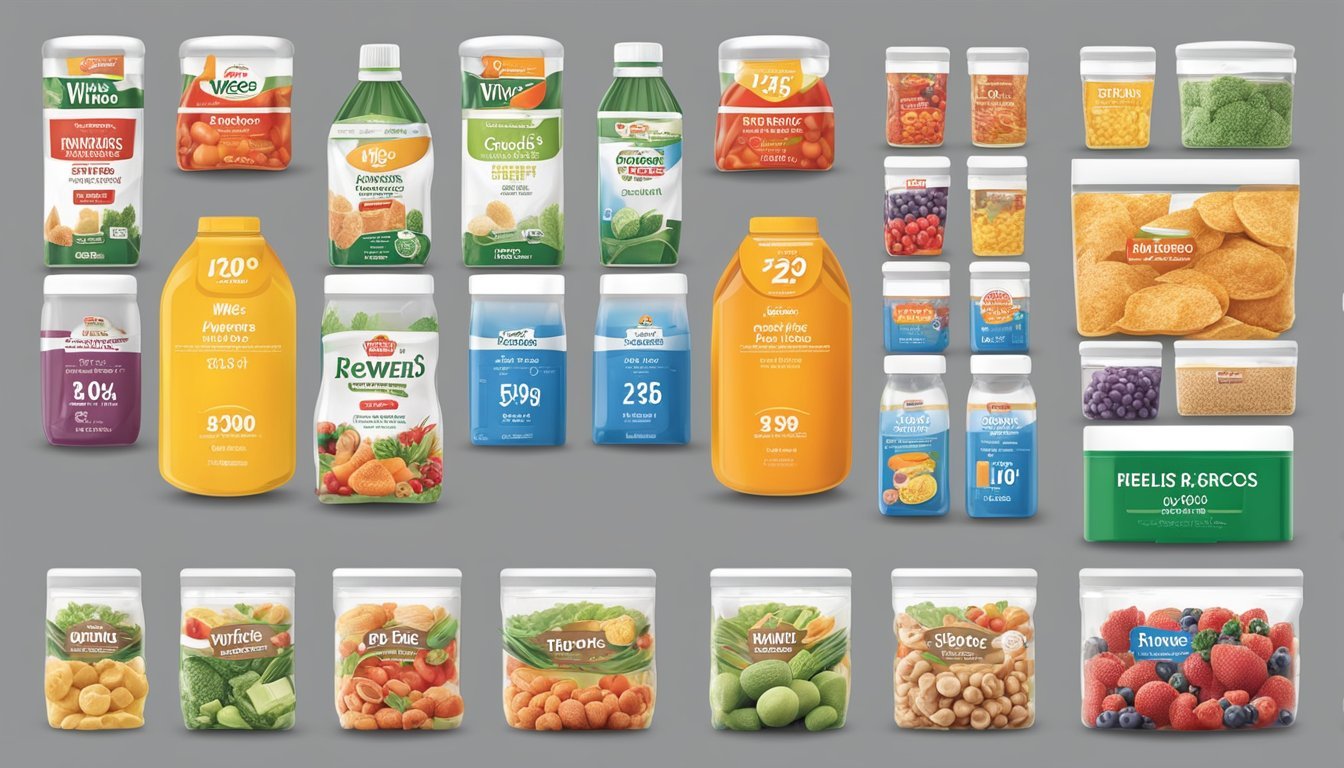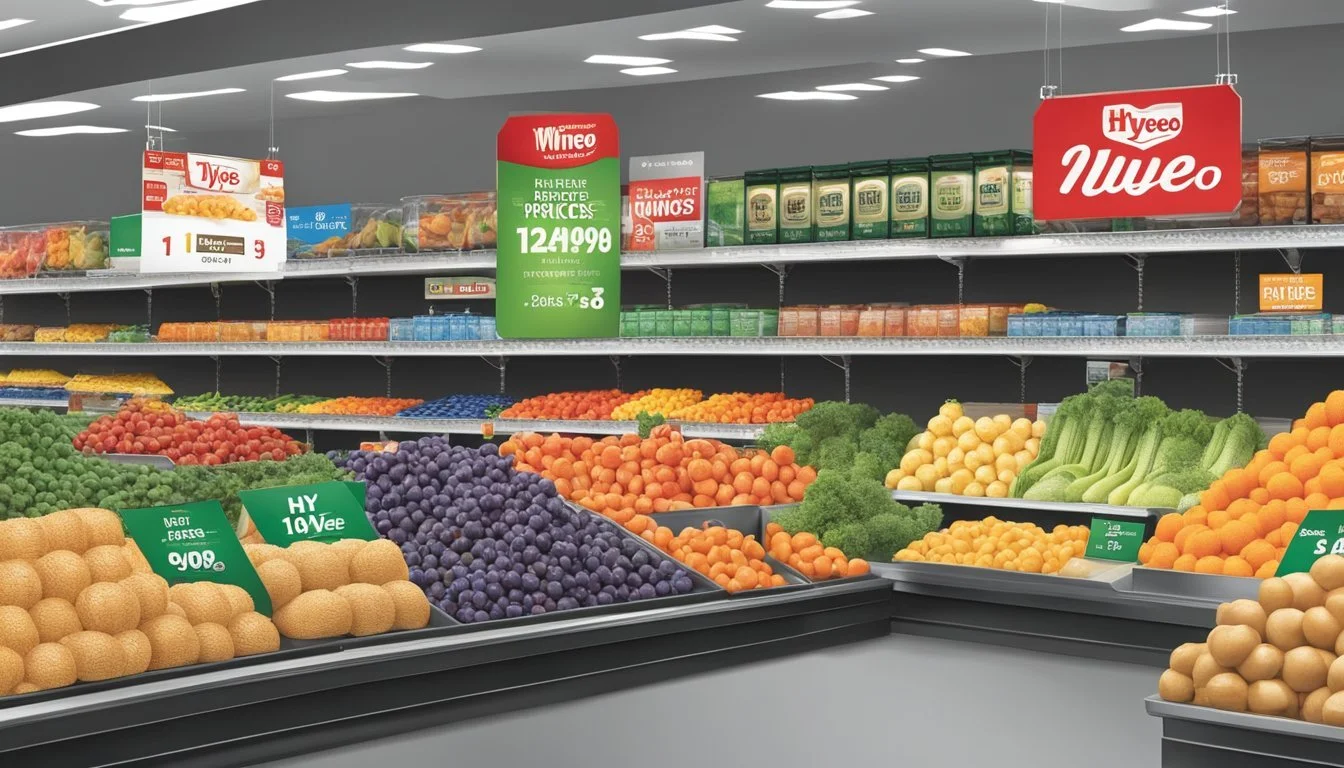Is Hy-Vee Cheaper Than WinCo Foods?
A Price Comparison of Midwest Grocery Chains
When comparing grocery store prices, shoppers often wonder how Hy-Vee stacks up against WinCo Foods. Both chains have loyal customer bases, but their pricing strategies differ significantly.
WinCo Foods generally offers lower prices than Hy-Vee across a wide range of products. WinCo's business model focuses on keeping operational costs low and passing savings directly to customers. The company uses a no-frills approach, with warehouse-style stores and a emphasis on bulk buying options.
Hy-Vee, on the other hand, tends to have higher prices but offers a more upscale shopping experience. The chain provides a broader selection of specialty and prepared foods, as well as additional services like in-store restaurants and pharmacies. While Hy-Vee may not compete on price alone, it aims to attract customers through enhanced amenities and customer service.
Understanding Grocery Store Pricing
Grocery store pricing involves complex strategies that balance costs, competition, and consumer demand. Retailers use various tactics to set prices that attract customers while maintaining profitability.
Factors Influencing Grocery Store Prices
Location plays a significant role in pricing. Stores in urban areas with high rent often have higher prices than those in rural locations. Operating costs, including wages and utilities, also impact pricing. Supply chain factors, such as transportation costs and seasonal availability, affect product prices.
Competition is a major influence. Chains like Walmart and Aldi often set price benchmarks that other stores must consider. Market conditions, including economic trends and consumer spending habits, shape pricing strategies.
Wholesale costs are crucial. Larger chains like Costco can negotiate better deals with suppliers due to their buying power. This allows them to offer lower prices on many items.
Differentiating Between Grocery Chains
Grocery chains use different pricing models to attract customers. Everyday low price (EDLP) stores like Walmart and WinCo Foods aim to offer consistently low prices across most products. These stores typically have fewer sales or promotions.
In contrast, chains like Kroger and Hy-Vee often use a high-low pricing strategy. They may have higher regular prices but offer frequent sales, discounts, and loyalty programs. This approach can lead to lower prices for savvy shoppers who track deals.
Some stores, like Grocery Outlet, specialize in offering discounted surplus or close-dated products. This allows them to provide very low prices on a changing inventory of items.
Target and other general merchandise retailers with grocery sections often price competitively on key items to draw customers, while maintaining higher margins on other products.
Overview of Hy-Vee and WinCo Foods
Hy-Vee and WinCo Foods are two prominent grocery chains in the United States, each with distinct characteristics and offerings. Both companies have built loyal customer bases through their unique approaches to retail and commitment to value.
History and Company Profiles
Hy-Vee traces its roots back to 1930 when Charles Hyde and David Vredenburg opened a small general store in Beaconsfield, Iowa. Today, Hy-Vee operates over 280 stores across the Midwest and Southern United States.
The company is employee-owned, with more than 40,000 workers participating as indirect stockholders. This structure fosters a strong sense of commitment to customer service and community engagement.
WinCo Foods, founded in 1967, began as a no-frills warehouse-style store focused on low prices. The company has since expanded to operate stores in 10 states, primarily in the Western and Southwestern regions.
Like Hy-Vee, WinCo Foods is majority employee-owned, which contributes to its reputation for efficient operations and competitive pricing.
Brand Focus and Store Offerings
Hy-Vee positions itself as a full-service supermarket chain, emphasizing quality, variety, and convenience. The stores feature extensive selections of fresh produce, high-quality meats, and prepared foods.
Hy-Vee has also invested in health-focused initiatives, incorporating in-store dietitians and expanding its organic produce offerings. The company's culinary expertise is evident in its diverse range of ready-to-eat meals and specialty departments.
WinCo Foods, in contrast, maintains a more streamlined approach. The stores are known for their large bulk food sections, allowing customers to purchase exactly the quantities they need at lower prices.
While WinCo's selection may be less extensive than Hy-Vee's in some areas, the chain compensates with consistently low prices across its inventory. WinCo also offers a range of store brand products, providing budget-friendly alternatives to national brands.
Price Comparison Between Hy-Vee and WinCo Foods
WinCo Foods consistently offers lower prices compared to Hy-Vee across a range of common grocery items. Significant savings can be achieved by shopping at WinCo, especially for budget-conscious consumers.
Methodology of Price Comparison
Price comparisons between Hy-Vee and WinCo Foods involve surveying common grocery items at both stores. Researchers typically select a basket of goods including staples like rice, pasta, meat, and seafood. They record prices for identical or comparable products at each location.
Surveys are conducted over multiple weeks to account for price fluctuations. Some studies also factor in store brand alternatives when available. To ensure accuracy, researchers often visit multiple store locations for each chain.
Analysis of Common Grocery Items
WinCo Foods generally offers lower prices on most common grocery items compared to Hy-Vee. Here's a breakdown of price differences for some key categories:
Rice: 15-20% cheaper at WinCo
Pasta: 10-15% lower at WinCo
Meat: 5-10% less expensive at WinCo
Seafood: 8-12% more affordable at WinCo
Household essentials like cleaning supplies and personal care items also tend to be priced lower at WinCo. The price gap is often more pronounced for store brand products.
Overall Cost of Shopping
Shopping at WinCo Foods can lead to substantial savings on grocery bills. Studies indicate that consumers can save 10-30% on their total grocery expenses by choosing WinCo over Hy-Vee. For a family spending $250 weekly on groceries, this translates to potential annual savings of $1,300 to $3,900.
WinCo's lower prices stem from its no-frills approach and focus on bulk sales. The store operates on thin profit margins and passes savings to customers. Hy-Vee, while often pricier, may offer a wider selection of specialty items and additional services.
Budget-conscious shoppers can maximize savings by purchasing staples and household essentials at WinCo. For specific or premium products not available at WinCo, supplementing with occasional Hy-Vee visits may be necessary.
Consumer Considerations Beyond Price
Price is just one factor when comparing Hy-Vee and WinCo Foods. The shopping experience, product quality, and store atmosphere also play crucial roles in customer satisfaction and loyalty.
Shopping Experience and Customer Service
Hy-Vee is known for its full-service approach. Customers often appreciate the helpful staff and wide range of departments, including pharmacies and in-store dining options. Hy-Vee stores typically offer a more personalized experience with employees available to assist shoppers.
WinCo Foods takes a no-frills approach. The stores operate on a self-service model, which can mean fewer staff members on the floor. Customers bag their own groceries and may encounter longer checkout lines during peak hours.
Both chains have loyal followings. Hy-Vee customers value the attentive service, while WinCo shoppers appreciate the straightforward, efficient shopping process.
Quality of Goods and Store Ambiance
Hy-Vee emphasizes product quality and store appearance. Their produce sections often feature extensive organic options and locally sourced items. The stores are typically well-lit and organized, creating a pleasant shopping environment.
WinCo Foods focuses on value. While their produce and meat quality is generally good, the selection may be more limited. Store layouts are functional rather than fancy, with a warehouse-style setup in many locations.
Hy-Vee usually offers a broader range of specialty and gourmet items. WinCo excels in bulk foods, allowing customers to purchase exactly the amount they need.
Fresh produce quality can vary between locations for both chains, but Hy-Vee generally maintains a reputation for higher standards in this department.
Supplementary Services and Discounts
Both Hy-Vee and WinCo Foods offer various ways for customers to save money beyond everyday low prices. These include rewards programs, digital and paper coupons, and convenient shopping options.
Rewards Program and Membership Benefits
Hy-Vee provides a Fuel Saver + Perks program that allows customers to earn points on purchases. These points can be redeemed for discounts on gas and groceries. The program is free to join and offers personalized deals based on shopping habits.
WinCo Foods does not have a traditional rewards program. However, it offers bulk buying options and employee ownership, which contribute to lower prices overall. WinCo's focus is on keeping costs down rather than providing loyalty incentives.
Digital and Paper Discount Strategies
Hy-Vee embraces both digital and paper coupons. Customers can access digital coupons through the Hy-Vee app or website. These can be easily added to their account and applied at checkout.
WinCo Foods primarily relies on in-store sales and markdowns. They do not accept manufacturer coupons but occasionally offer store coupons. WinCo's strategy centers on maintaining consistently low prices rather than fluctuating discounts.
Both stores feature weekly sales circulars, available in print and online.
Grocery Delivery and Online Shopping
Hy-Vee offers a comprehensive online shopping experience. Customers can order groceries for delivery or pickup through the Hy-Vee website or mobile app. The service includes same-day delivery options in many areas.
WinCo Foods has more limited online options. Some locations offer curbside pickup, but the service is not available chain-wide. WinCo focuses on in-store shopping to keep overhead costs low.
Hy-Vee's online platform often includes digital-only deals and easy reordering of past purchases. This can lead to additional savings for frequent online shoppers.
Conclusion
WinCo Foods emerges as the more budget-friendly option compared to Hy-Vee. Families looking to save on groceries may find WinCo's prices significantly lower.
Price comparison data consistently shows WinCo offering substantial discounts. Their no-frills approach and focus on efficiency contribute to these savings.
Hy-Vee, while potentially pricier, may offer a different shopping experience. Some customers might prefer their wider selection or additional services.
The choice between WinCo and Hy-Vee ultimately depends on individual priorities. Budget-conscious shoppers will likely favor WinCo's lower prices.
Families can potentially save hundreds or even thousands of dollars annually by choosing WinCo for their regular grocery shopping.
It's worth noting that prices and offerings can vary by location and over time. Shoppers are encouraged to compare prices at their local stores.
Both chains have their strengths, but for pure cost savings, WinCo Foods takes the lead in this comparison.




